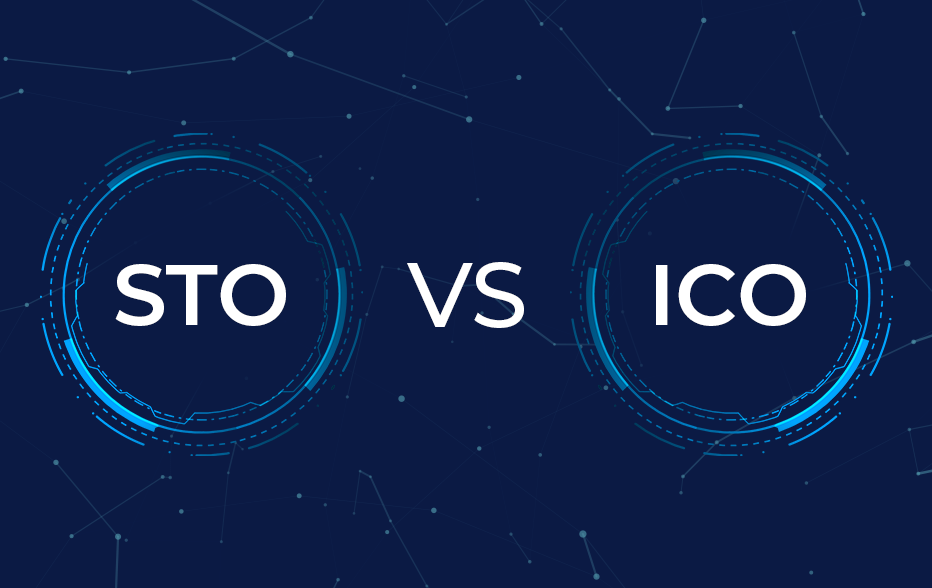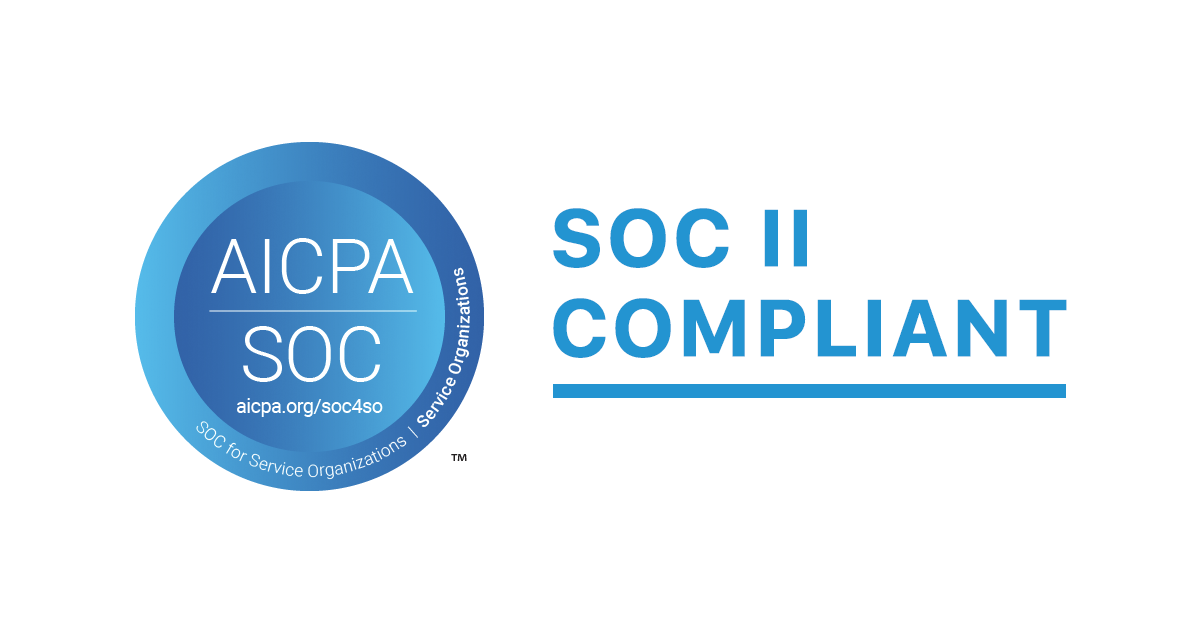A Guide to Raising Capital Through Equity Crowdfunding in Web3
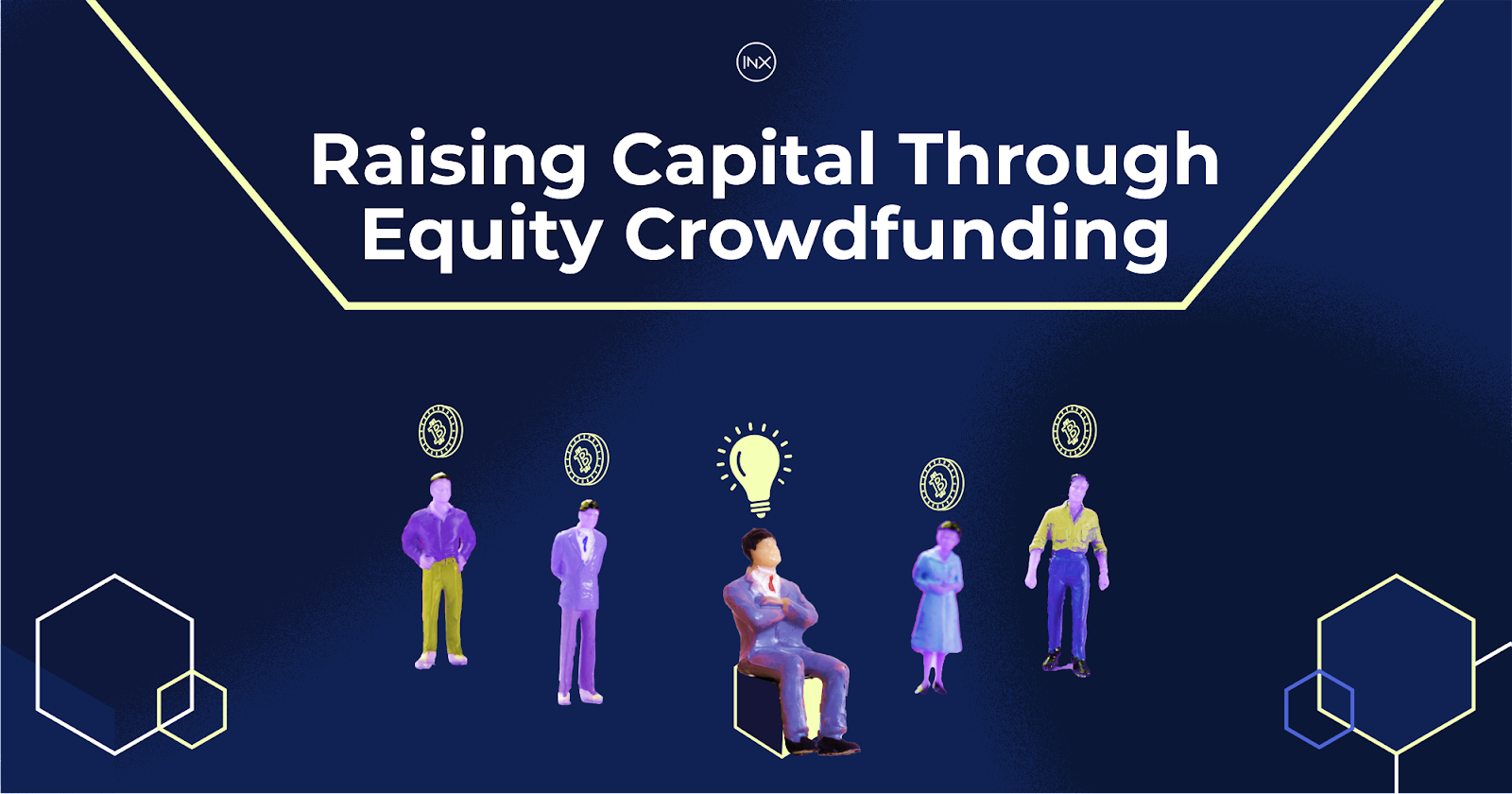
Raising capital is a major issue every startup must tackle to keep operating before the revenue starts rolling in. However, traditional fundraising methods often fall short in the Web3 landscape, especially regarding scaling and growth.
Therefore, it is important to consider innovative ways of raising capital designed for Web3; Web3 crowdfunding or Equity crowdfunding is an example of such a method. It democratizes the investment process, which resonates deeply with the decentralized principle of Web3. In this article, we take a look at Web3 Crowdfunding, how it works, and an overview of how to start.
What is Web3 CrowdFunding?
Web3 crowdfunding refers to the decentralized process of raising capital using platforms and technologies built on blockchain and other distributed ledger technologies. Unlike traditional crowdfunding platforms, which are centralized, Web3 platforms operate on decentralized networks, ensuring no single point of control or failure.
One of the most common forms of Web3 crowdfunding is through token-based fundraising, where projects issue their own tokens in exchange for stablecoins or cryptocurrencies like Bitcoin and Ethereum. These tokens can represent various utilities, from a share in the project to a right to use its services.
Features of Web3 Crowdfunding
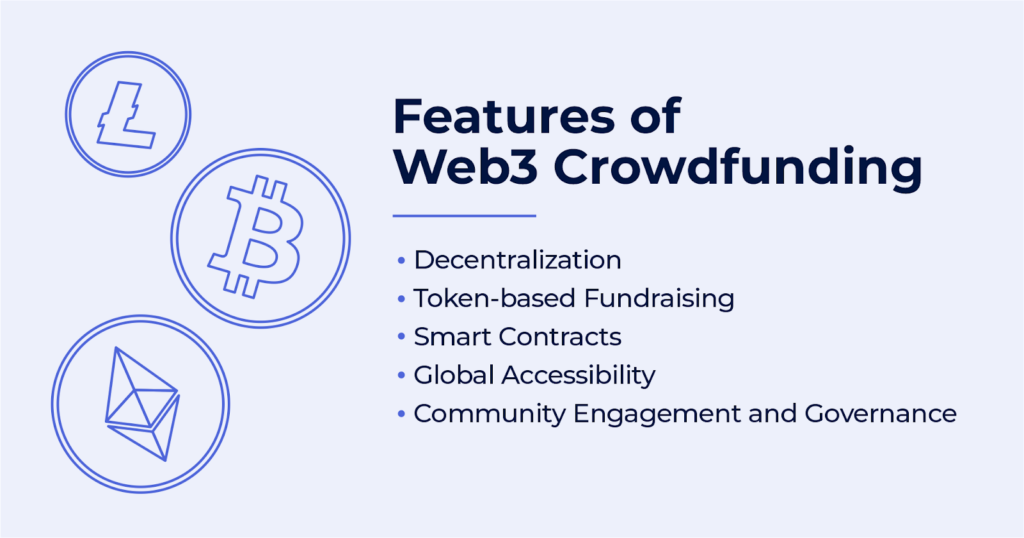
Decentralization
Web3 crowdfunding platforms run on decentralized networks, ensuring no single point of control or failure. This decentralization offers enhanced security, transparency, and resistance to censorship.
Token-based Fundraising
At the heart of Web3 crowdfunding is the concept of token-based fundraising. Projects issue their own tokens in exchange for cryptocurrencies like Ethereum or Bitcoin. These tokens can serve multiple purposes:
- Equity Tokens: Represent ownership in a project.
- Utility Tokens: Provide access to a project’s product or service.
- Debt Tokens: Represent a debt or IOU from the project to the holder.
Smart Contracts
In the context of crowdfunding, smart contracts automate and streamline the fundraising process, ensuring that funds are released to the project only when specific conditions or milestones are met. This automation reduces the need for intermediaries and enhances trust among participants.
Global Accessibility
One of the standout features of Web3 crowdfunding is its global reach. Anyone with an internet connection and a cryptocurrency wallet can participate, breaking down geographical barriers and opening projects to a worldwide pool of potential investors.
Community Engagement and Governance
Web3 crowdfunding platforms often emphasize community involvement. Backers can have a say in the project’s direction, vote on key decisions, and influence developmental milestones.
Benefits of Equity Crowdfunding for Web3 Startup
Equity crowdfunding offers Web3 startups several benefits, including easier access to capital and community building. In this section, we highlight some of the benefits of equity crowdfunding.
Access to Capital
For many Web3 startups, traditional financing routes can be limiting; venture capital might be competitive, and bank loans come with their own set of challenges.
Equity crowdfunding opens the door to a new source of capital. By presenting their ideas directly to the public, startups have the potential to tap into a broader and more diverse pool of investors, ranging from enthusiastic consumers to seasoned investors looking for the next big thing.
Community Building
A significant advantage of equity crowdfunding is the community-building. Every investor you on-board becomes a part of your project’s journey, rooting for its success. This fosters a sense of community and loyalty that can be invaluable.
Remember that a strong, supportive investor community can offer more than just funds; they can provide word-of-mouth marketing, feedback, and business connections.
Validation and Market Feedback
A successful equity crowdfunding campaign is a strong market validation. It’s a clear signal that there is demand for your product or service. Moreover, early investors can provide crucial feedback, helping your project refine its offerings and strategies.

How Does Web3 Crowdfunding Work?
While Web3 crowdfunding follows the general principle of traditional crowdfunding, it introduces several unique mechanisms facilitated by blockchain technology. Below is a general idea of the Web3 crowdfunding process.
Project Proposal
Just like any crowdfunding initiative, it starts with an idea. Your team must write a proposal on the project detailing its objectives, potential benefits, and how it intends to leverage blockchain or other Web3 technologies.
Platform Selection
The next step is to select a Web3 crowdfunding platform that suits your needs. Platforms like Gitcoin, Republic, and others offer different features and cater to various niches within the Web3 ecosystem.
Token Creation
One of the defining features of Web3 crowdfunding is the issuance of tokens. Create a token representing some form of value or utility within the proposed system. These tokens can be equity tokens (representing ownership), utility tokens (giving access to services), or other types.
Campaign Launch
With tokens created, the project launches its crowdfunding campaign. This involves setting a fundraising goal, detailing how funds will be used, and specifying the campaign’s duration.
Smart Contract Integration
Your smart contract automates and secures the fundraising process with pre-set conditions encoded on the blockchain. For instance, a smart contract might stipulate that funds will only be released to the project once a particular milestone is achieved, ensuring accountability.
Backer Participation
Interested backers can now participate by sending cryptocurrencies (like Ethereum or Bitcoin) to the project’s address. In return, they receive the project’s tokens per the terms set out in the campaign.
Milestone Achievement and Fund Release
If your project decides to integrate milestone-based smart contracts, then funds are held in escrow. The smart contract automatically releases the corresponding funds once the project achieves specified milestones.
Post-Campaign Development and Reporting
Once the crowdfunding campaign concludes, the project team begins development, utilizing the raised funds. Regular updates and transparent reporting are crucial to keep backers informed and maintain trust.
Token Utility Realization
As the project progresses and its ecosystem develops, the tokens issued during the crowdfunding phase begin to realize their utility, be it in the form of equity, access to services, or other functionalities.
Risks and Considerations of Web3 Equity Crowdfunding
Although Web3 crowdfunding is a great way to raise capital, there are some limitations. Before you decide to do equity crowdfunding, ensure you understand the risks and limitations. In this section, we cover the challenges founders face with equity crowdfunding.
- Regulatory Challenges: One of the primary concerns is regulatory compliance. Different countries have varying regulations surrounding equity crowdfunding to protect both investors and startups. For Web3 startups, it’s crucial to understand and adhere to these regulations to avoid potential legal pitfalls. This might involve setting investment limits, providing detailed financial disclosures, or ensuring investor accreditation.
- Dilution of Control: By issuing tokens, especially those with governance rights, founders might dilute their control over the project. Token holders might have voting rights that can influence project decisions.
- High Competition: The Web3 space is burgeoning, with significant competition for investor attention and funds. Standing out and gaining traction can be challenging for new projects.
- Market Volatility: The value of cryptocurrencies can be highly volatile. If the project’s funds are held in volatile assets, it can impact its runway and financial stability.
- Community Management: Managing a large community of token holders can be resource-intensive. Founders need to ensure regular communication, address concerns, and manage expectations.
- Technical Scalability: As the project grows, technical challenges might be related to scaling the platform or solution, especially if the initial fundraising goals needed to be revised to address these needs.
- Exit Strategy Limitations: Traditional exit strategies like acquisitions or IPOs might be more complex for projects that have undergone Web3 crowdfunding due to the decentralized nature of token ownership.
Choosing a Web3 Crowdfunding Platform
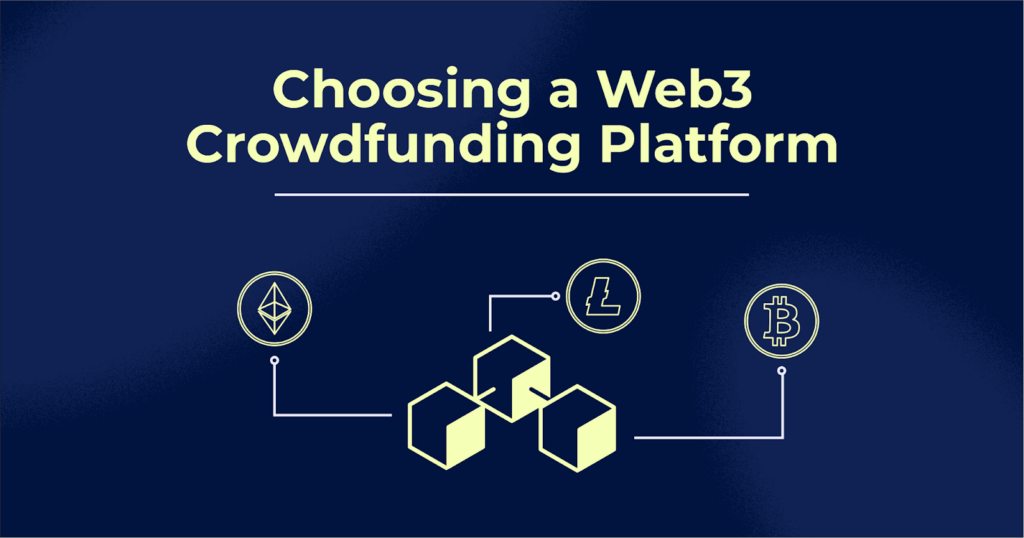
The right crowdfunding platform can contribute greatly to the success of your fundraising. Therefore, when selecting a crowdfunding platform for your project, making an informed decision is crucial.
Consider if the platform is the best fit for your fundraising goals; here are some factors you should be on the lookout for:
- Platform Reputation: Research the platform’s track record. A platform with a history of successful campaigns can boost your project’s credibility.
- Fees and Costs: Understand the fee structure. Some platforms charge a percentage of funds raised, while others might have fixed fees or additional costs.
- Target Audience: Ensure the platform caters to your target demographic. Some platforms might be more suitable for tech projects, while others cater to creative endeavors.
- Payment Options: Check the available payment methods. For Web3 crowdfunding, ensure the platform supports the cryptocurrencies you intend to accept.
- Support and Resources: Some platforms offer additional support, like marketing assistance, campaign strategy, or even post-campaign services. This can be invaluable for first-time campaigners.
- Flexibility: Consider platforms that offer both fixed (all-or-nothing) and flexible (keep what you raise) funding options, giving you more control over your fundraising strategy.
- Community Engagement: Platforms with active and engaged communities can provide valuable feedback, support, and even promotion for your campaign.
The Best Platform for Equity Crowdfunding
In this section, we highlight the best crowdfunding companies designed to help Web3 founders crowdfund to finance their companies.
Gitcoin
Gitcoin is designed to connect open-source developers with projects, fostering collaboration and innovation. However, its true strength lies in its unique approach to fundraising. Through its Grants program and Quadratic Funding model, Web3 projects can secure funding, with even modest contributions potentially leading to significant matching funds, thanks to the.
This ensures that projects with genuine community support receive the backing they deserve. Additionally, by hosting virtual hackathons and offering bounties for specific tasks, Gitcoin provides Web3 companies with avenues to raise funds and discover talent and solutions.
Republic
Republic acts as a bridge between traditional investment methods and the decentralization promise of Web3. It provides a platform where innovative projects can showcase their potential and secure funding from diverse backers.
What sets the Republic platform apart is its commitment to democratizing investment. By allowing individuals to invest as little as $10 in startups they believe in, Republic breaks down barriers that once restricted early-stage investing to a select few.
For Web3 companies, this means access to a broader, more diverse investor base, amplifying their reach and resonance. Furthermore, Republic’s recent forays into token-based fundraising and collaborations, such as the partnership with INX, underscore its vision to stay at the forefront of Web3 innovations.
Spotlight on Republic’s Collaboration with INX
Republic’s recent partnership with INX is particularly noteworthy. INX, a leading digital asset platform, collaborates with Republic to bring tokenization and trading to the forefront. This partnership signifies a fusion of traditional equity crowdfunding with the dynamic world of tokenized assets.
For Web3 companies, this collaboration opens up new avenues for fundraising. By tokenizing their assets, these companies can offer potential investors a more liquid and flexible form of equity, making attracting a wider range of backers easier.
Furthermore, integrating with INX’s trading platform ensures that these tokenized assets can be traded seamlessly, enhancing their appeal to potential investors. In essence, the Republic-INX alliance is shaping a new paradigm in Web3 fundraising, offering companies both the credibility of traditional fundraising and the innovation of blockchain-based tokenization.
Frequently Asked Questions (FAQ)
What is equity crowdfunding?
Equity crowdfunding allows individuals to invest in early-stage companies in exchange for shares or a stake in the company. It differs from traditional crowdfunding, where backers receive a product or service.
How does equity crowdfunding differ from traditional crowdfunding?
While traditional crowdfunding revolves around pre-selling a product or service, equity crowdfunding offers investors a financial stake in the company’s future.
Are there any legal considerations for equity crowdfunding?
Yes, different countries have specific regulations surrounding equity crowdfunding to protect both investors and startups. Therefore, you should be aware of and adhere to these regulations.
How do platforms like Republic and Gitcoin facilitate equity crowdfunding?
Platforms like Republic offer a structured environment for startups to present their ventures to potential investors, while Gitcoin focuses on open-source projects and community-driven initiatives.
What are the risks associated with equity crowdfunding for investors?
Investors should be aware of potential risks, including the possibility of losing their investment, dilution of shares, and the long-term nature of returns.
The INX Digital Company INC October 4, 2023
The INX Digital Company inc. is an expert in the field of finance, crypto and digital securities.



